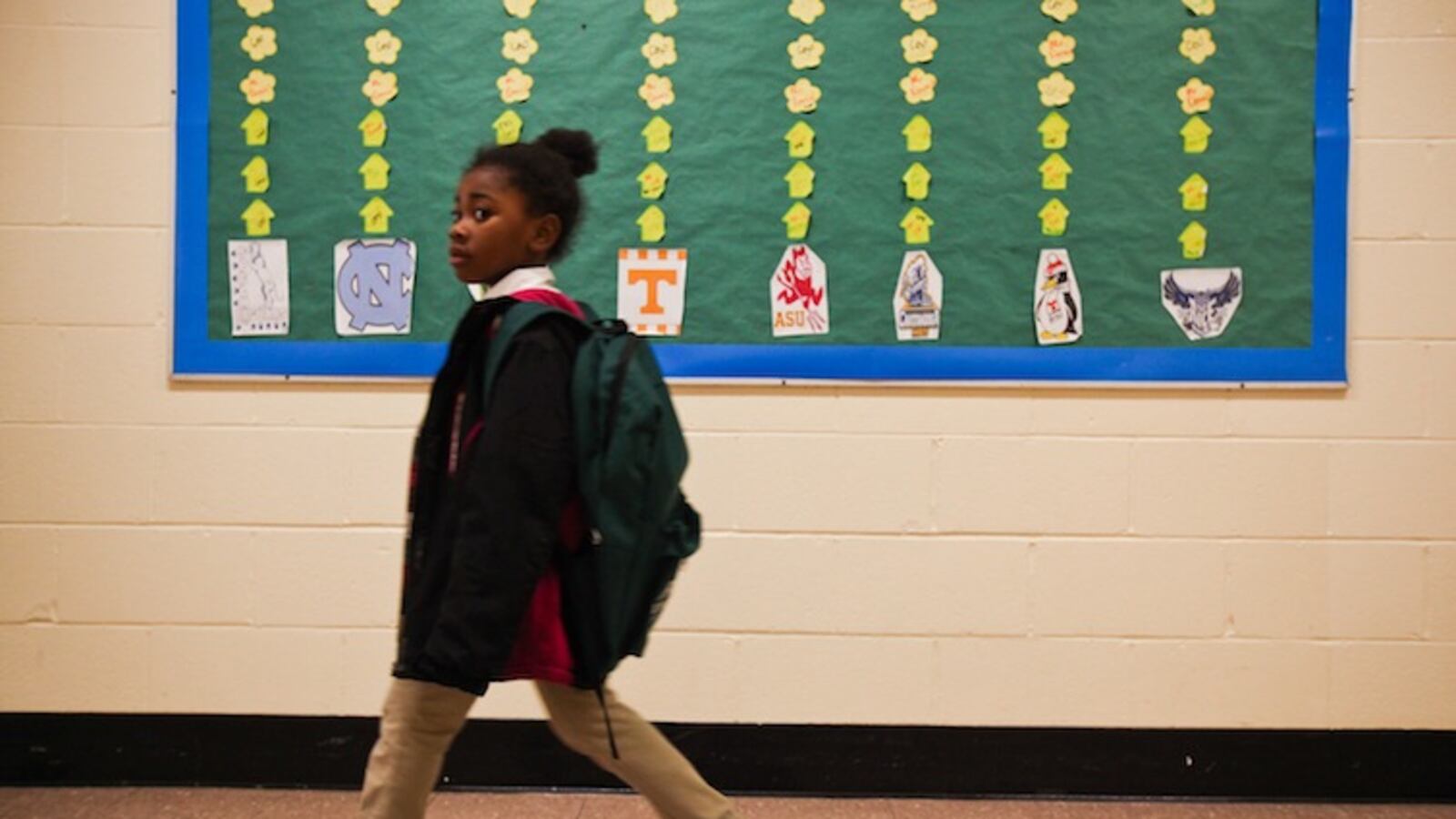Two years into a push to raise test scores in Tennessee’s lowest-performing schools, some of the most notable gains were concentrated in Memphis — and in schools that were not subject to the state’s most intensive interventions.
The findings come from the new list of 85 “priority schools” — or schools in the bottom 5 percent statewide — released by the Tennessee Department of Education on Tuesday. The list suggests that some schools in the bottom 5 percent in 2012 jumped forward without a significant overhaul, even as the state and local districts revamped other schools’ staffs, programs, and operations.
That outcome raises questions about which strategies are most effective as the state plans to expand its efforts to improve struggling schools. But state and district officials said they were satisfied with their progress up to now, noting that the bottom 5 percent of schools this year scored higher than the bottom 5 percent two years ago.
Indeed, the test score gains by schools in the bottom 5 percent were larger than the state’s overall gains over the last two years.
“This is hard work, but results from the first round … show us that it’s doable,” said state Education Commissioner Kevin Huffman. “We’ve seen signs of hope and that’s why we believe it is critical to continue investing in these schools.”
Tennessee promised to improve schools in the bottom 5 percent when it applied for a waiver from some federal education rules. The new list suggests that the goal remains ambitious: A full 50 of the 83 schools on the 2012 priority list are still on the list now, and once again all schools on the priority list serve mostly poor students.
And the trajectories of schools that landed on the first list do not at first glance offer any clear clues about the best approach to boosting performance.
Schools on the priority list can be taken over by the state-run Achievement School District or placed in a special turnaround group within a district, known as an Innovation Zone or Innovation Cluster, which grants schools additional fund as well as new staffs, schedules, academic programs. But not all schools on the list undergo formal changes.
Of the 83 schools on the 2012 list, 17 have been turned into ASD-run schools; 17 joined innovation zones; and nine, including three alternative schools, were closed outright. Thirty-eight schools — including 22 in Shelby County and three Memphis charter schools — received no intervention other than the regular school improvement strategies in place in their districts.
Some schools that fell into each of these categories boosted scores enough to get off the priority list.
The 13 schools in Shelby County’s “Innovation Zone” fared best. Six of them, or nearly half, improved so much that they are no longer at risk of state takeover.
The three Memphis charter schools and nine of the 22 Shelby County Schools that were not closed, placed in the I-Zone or added to the ASD are also no longer on the priority list.
That was true for just one of the four schools that Nashville placed into its “Innovation Cluster.”
In the state-run ASD, two of the six schools the district took over two years ago—one in Memphis, one in Nashville—were no longer in the bottom 5 percent. The schools the district added last year were not eligible to come off of the list due to state rules, while three ASD elementary schools do not appear on the new list because they do not have tested grades.
Of the 85 schools on the new list, just 59 are in Memphis, including nine that the district no longer runs — down from 69 two years ago. Eleven Nashville schools joined the list for the first time.
“The good news is that Memphis had a lot of schools moving off the list,” said Barbara Prescott, a former Memphis City Schools board member who is now the director of the PeopleFirst initiative.
Kevin Woods, the chair of Shelby County Schools’ board, said the strong showing by Memphis schools reflects the fact that the district supports all of its schools, not just the ones that it tries to overhaul.
“The results we are seeing reflect the work of strong and stable school leadership,” he said. “The results are not just in our I-Zone schools but in many of our schools that have chosen to recruit and retain the best teachers while also using data to drive decision-making.”
And the head of the state’s largest teacher group said the new list showed that existing schools could also improve students’ performance without shaking up their staffs.
“The teachers and administrators are going above and beyond trying to provide a quality education to all the students and our public schools,” said Barbara Gray, a former Shelby County Schools administrator and the new president of the Tennessee Education Association, in an interview. “We need to invest in our traditional public schools.”
ASD Superintendent Chris Barbic said he was satisfied because the previous list had been a wake-up call that moved the state in the right direction.
“When we see a sense of urgency that didn’t exist before, that’s great. The days of having a failing school for a decade are over,” Barbic said. “Part of the value of the ASD is the existential threat of the ASD: If your school doesn’t get better it’s going to get taken away. ”
Correction: An earlier version of this post misstated the percent of schools that had come off of the priority list in some districts. Some schools in the ASD were not eligible to be removed from the list. It also listed the TEA’s Ms. Gray as a former Memphis City rather than Shelby County administrator. The post has been updated to reflect those changes.

